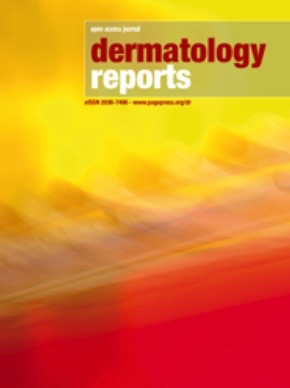Metronidazole-induced linear immunoglobulin A disease in a patient suffering from ulcerative colitis: a case report and focused review of the literature
All claims expressed in this article are solely those of the authors and do not necessarily represent those of their affiliated organizations, or those of the publisher, the editors and the reviewers. Any product that may be evaluated in this article or claim that may be made by its manufacturer is not guaranteed or endorsed by the publisher.
Authors
Linear immunoglobulin (Ig) A disease (LAD) is a rare autoimmune blistering dermatosis caused by linear deposition of IgA1 along the dermoepidermal junction of skin and mucosae. It can affect both children and adults. Although idiopathic in most cases, it can also be associated with infections, malignancies, or drug administration. Among medications, antibiotics are most commonly responsible, particularly vancomycin. We report the case of a 51-year-old female patient who developed mucocutaneous LAD after oral metronidazole administration, which was confirmed by histopathological examination and direct immunofluorescence of one of the bullous lesions. Lesions rapidly cleared after metronidazole discontinuation and a short course of oral methylprednisolone and dapsone. To our knowledge, this is the third reported case of metronidazole-induced LAD and the first in which metronidazole was not administered in combination with other antibiotics such as ceftriaxone.
How to Cite

This work is licensed under a Creative Commons Attribution-NonCommercial 4.0 International License.








